Intersection, Hwy 49 and Hwy 61, Clarksdale, Mississippi, 4×5 “Wet Plate”
Above is a picture of the Mississippi crossroads where blues legend Robert Johnson sold his soul to the Devil in return for the ability to play guitar. Unfortunately, it didn’t work out well for Mr. Johnson; while he created some great blues, he died young and broke and unrecognized, his grave somewhere unknown in the Delta. It’s been sung and talked about enough in popular American culture to have become a recognizable thing globally. The Crossroads. Located at the corner of Highway 61 and Highway 49 in Clarksdale, Mississippi, I took the photo on Highway 61 just north of the Highway 49 intersection so I could get the dead dog in the picture. Seemed appropriate. If you look to the right side of the photo you’ll see the traffic lights that sit at the intersection.
The bargain Johnson supposedly struck at this intersection is what we call “Faustian,” not really a ‘bargain’ at all, where someone trades something essential for personal gain, the gain being to receive what they think will make them happy but doesn’t. It makes things worse when all is said and done. If you’re familiar with classical European literature you’ve read about Dr. Faustus, the famous scientist who trades his spiritual and moral integrity for knowledge and power and then comes to a ruinous end. Writing a gloss on the legend in his play Faust, Goethe took some liberties with the story, now a wager between Dr Faust, who can find no meaning in his life, and Mephisto, the Devil, who promises to give his life meaning if Faust agrees to serve him forever after.
The the story is this: a man strikes a deal, depriving himself of a freely-willed human future in return for the quick and easy, a quicksilver shortcut to the goal, and in the process loses the good of what he possessed without gaining anything better when it’s all done, in fact, what’s been gained is a much impoverished version of what he started with. It’s called “a deal with the Devil.”
*************
Somewhere in the Mississippi Delta (Can’t Remember), 4×5 “Wet Plate”
As I mentioned in a previous post, I’d recently read Sally Mann’s Hold Still, a great read if you’re interested in the interior lives and thought processes of artists. There’s few photographers I’d class as ‘artists,’ but Sally Mann would be one of them, so I was interested to read what she had to say. In the process, I got to thinking about her use of a view camera and the slow, deliberate nature of her craft. It’s so unlike what digital, or even 35mm film, allows. I also like the results. There’s nothing more beautiful than an 8×10 b&w contact print. She’s also a Southerner, as am I, with an eye for the Gothic details of life in Deep South America. Her recent work involved a trip from Memphis to New Orleans via the Mississippi Delta taking pictures of things that caught her eye along the way. She did it with her view camera and with wet plates, liquid emulsions she brushed onto 8×10 glass plates and used as the negatives for her 8×10. In addition to involving a lot of prep work, she’d also have to immediately develop the plates in the back of her pickup under a black cloth. What she gets when she gets a good shot is something really interesting, imprecise, sometimes blurry and diffuse, often with serendipitous features that give a powerful character to the final prints. It’s obviously a difficult process to master, which gives heft to the work because they’re the result of skill and hard mastery. They say “this is something that took skill and hard work and incredible perseverance, and in the end produced something beautiful.”
Which got me thinking: I’ve been through the Delta a number of times with my camera, so I know it well, and I’ve also spent some time with alternative processes, and – you know – the idea of shooting the Delta with a view camera and some funky emulsions sounded like a great trip, so I started thinking of what I’d need to do the work. I’ve got a view camera and tripod, I’ve got the time; all I’d really need to do is figure out how to do the emulsions. Or even simpler, I could do set pieces on regular 8×10 negative film – they still make it – and then contact print it. That would be a fun project, and certainly one I could exhibit if the work was decent.
But then I had a further thought: I wonder, in all of the post-processing software I’ve got loaded onto my computer but never much use, do I have a “wet plate emulation?” I searched around and, yes, I did. So…I pulled up my Mississippi Delta photos and after cropping them to 4×5 for authenticity, started running a few of them through the wet plate emulation and damn!, a lot of them looked really good. Exhibition quality if printed on good pigment paper at 8×10. It really is powerful work if I might say so myself.
*************
But…there’s something wrong with this. I’m not sure I can articulate it, except to say that my ‘wet plates’ and Sally Mann’s wet plates occupy two different poles of artistic merit. Assuming you think my wet plates are as evocative as Ms. Mann’s from a visual standpoint, you could say they have equal creative merit, but is that really the criterion for assessing the relative worth of our Delta work, or is there something more, something more evanescent but crucial, that’s present in her work and absent in mine?
I would argue there is. Her’s possess an authenticity that mine mimics, even though they might look similar technically. She dragged an 8×10 view camera around for 1000 miles, jugs of dangerous chemicals in tow, which relegated her going places that would accommodate her. I drove around, pointed my Leica M8 at everything and shot. At each location, she’d spend an hour or two developing her plates, drying them, inspecting them, repeating the process until she got what she wanted. I pushed a shutter and chimped the results, brought thousands back on an SD card and ran the keepers thru emulation software on my Mac. Once home she fastidiously contact printed her best plates, producing 20 or so exquisite silver prints. I tee’d up my Epson R3000, loaded in the Moab Lasal Exhibition Luster Paper, and effortlessly printed off 40 8×10 prints that could pass in a pinch for contact prints.
So…am I going to exhibit my Delta “wet prints?” No. Because to do so would be deceptive, although many photographers born in the digital age might disagree. It’s the result that matters, right? Tell that to Sally Mann. That’s the Devil’s Bargain we’ve made with digital. What used to be the product of craft and deep skill is now just a mouse click away. We still get the same results, but the honest pride of work well done has been taken from the process. We’ve wished for one thing and received another in the guise of the quick and easy, the thing that we thought would liberate us. Same thing Robert Johnson did at those crossroads in Clarksdale, Mississsippi, the story old as civilization.

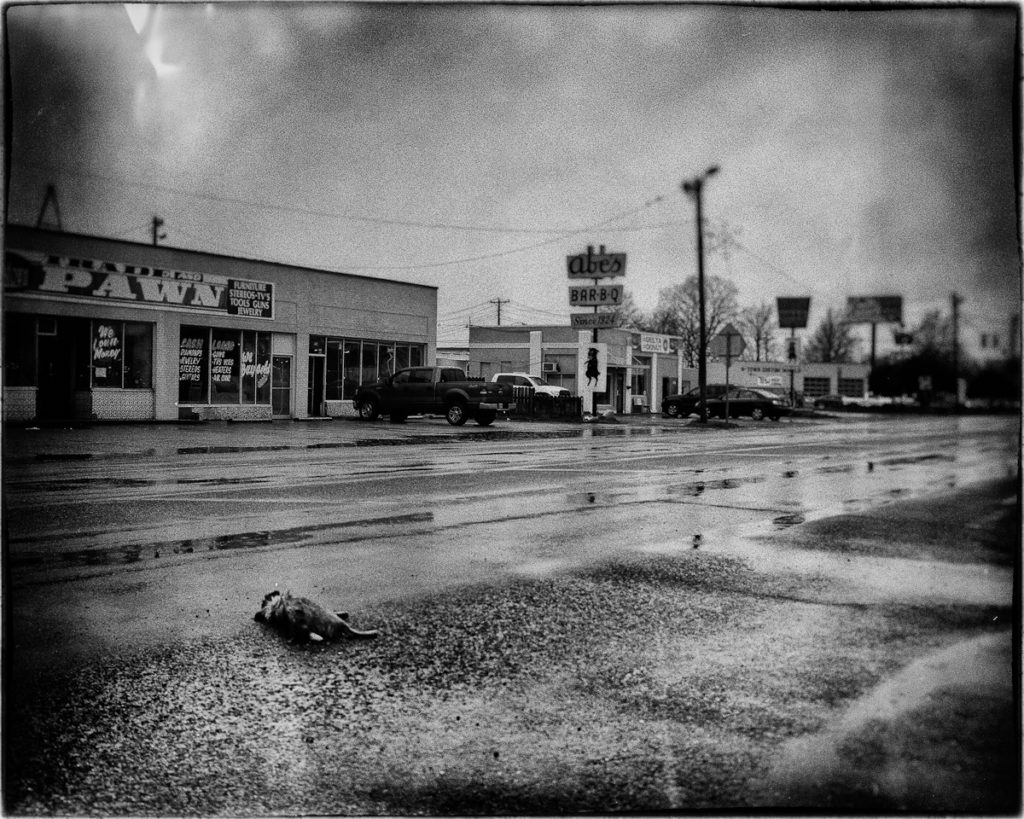
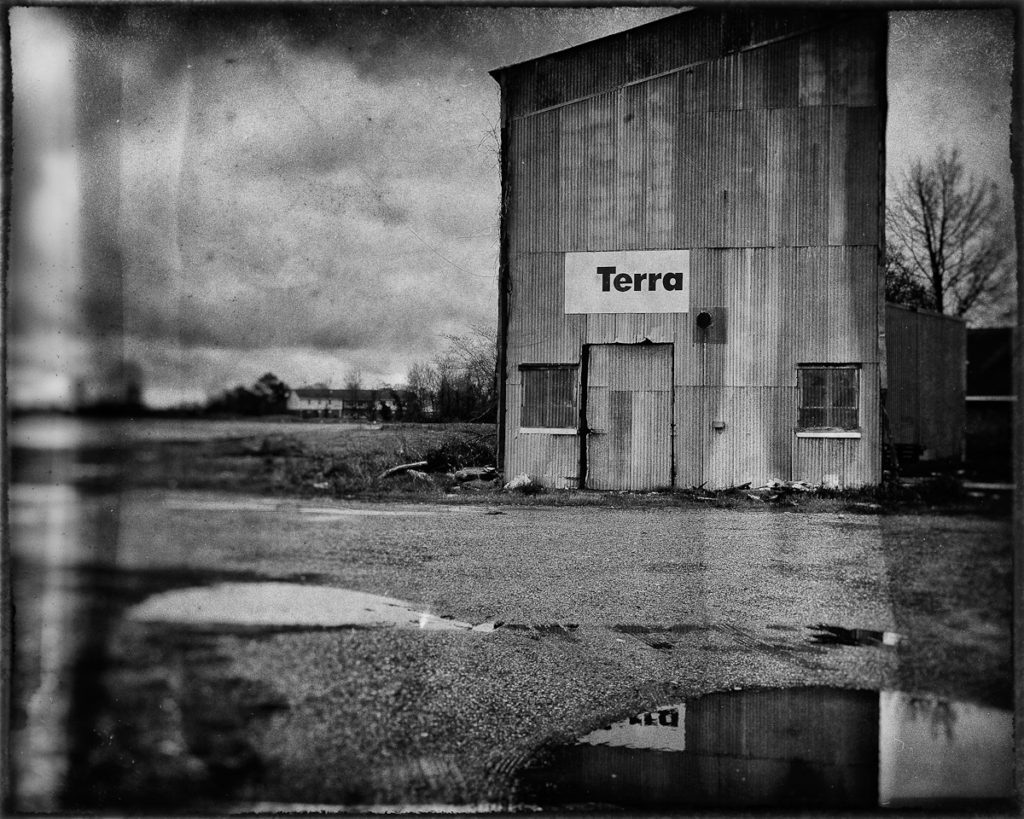
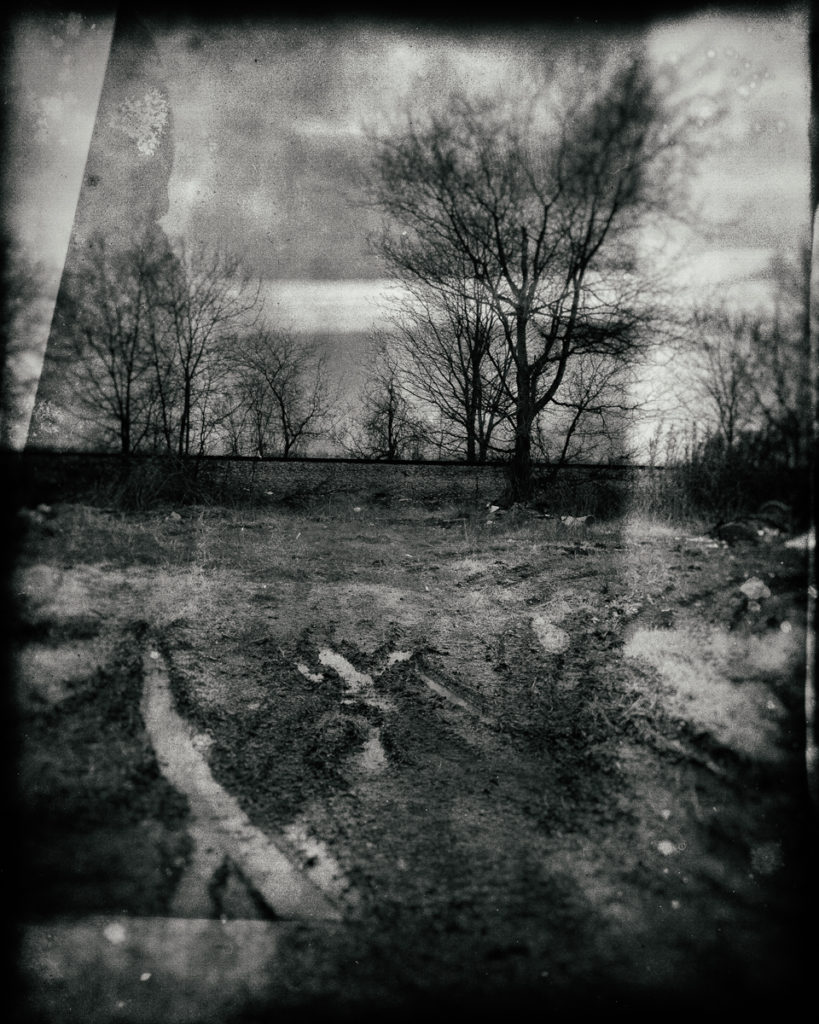
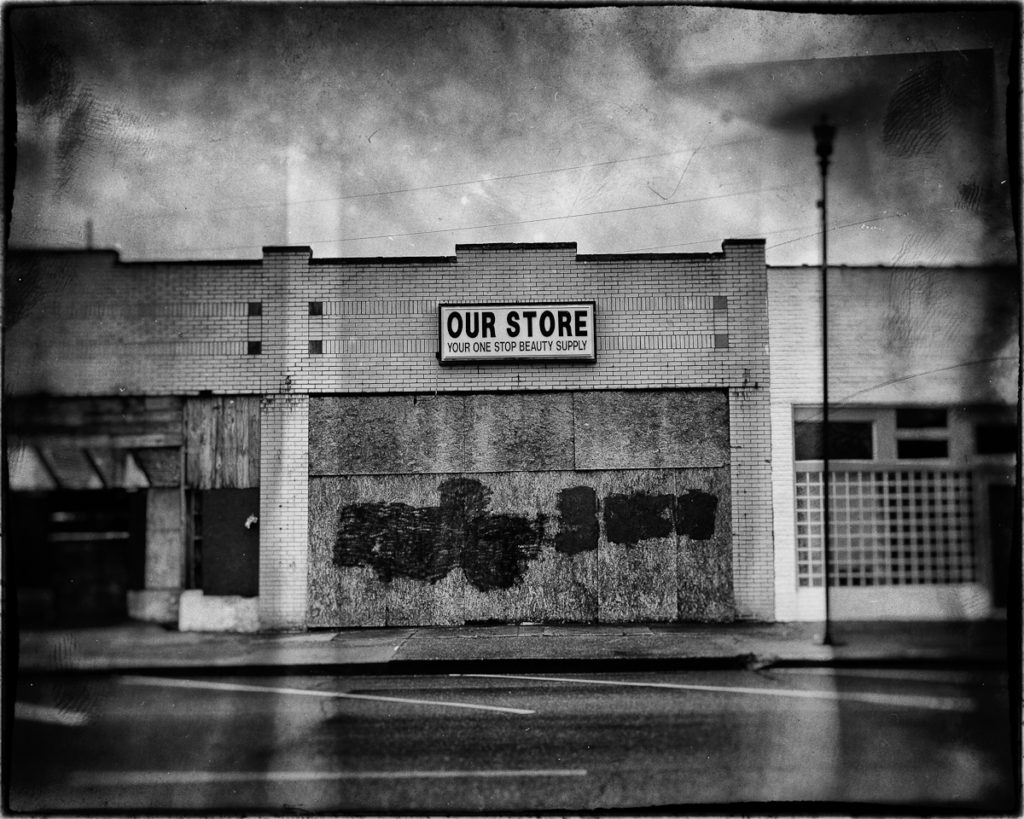
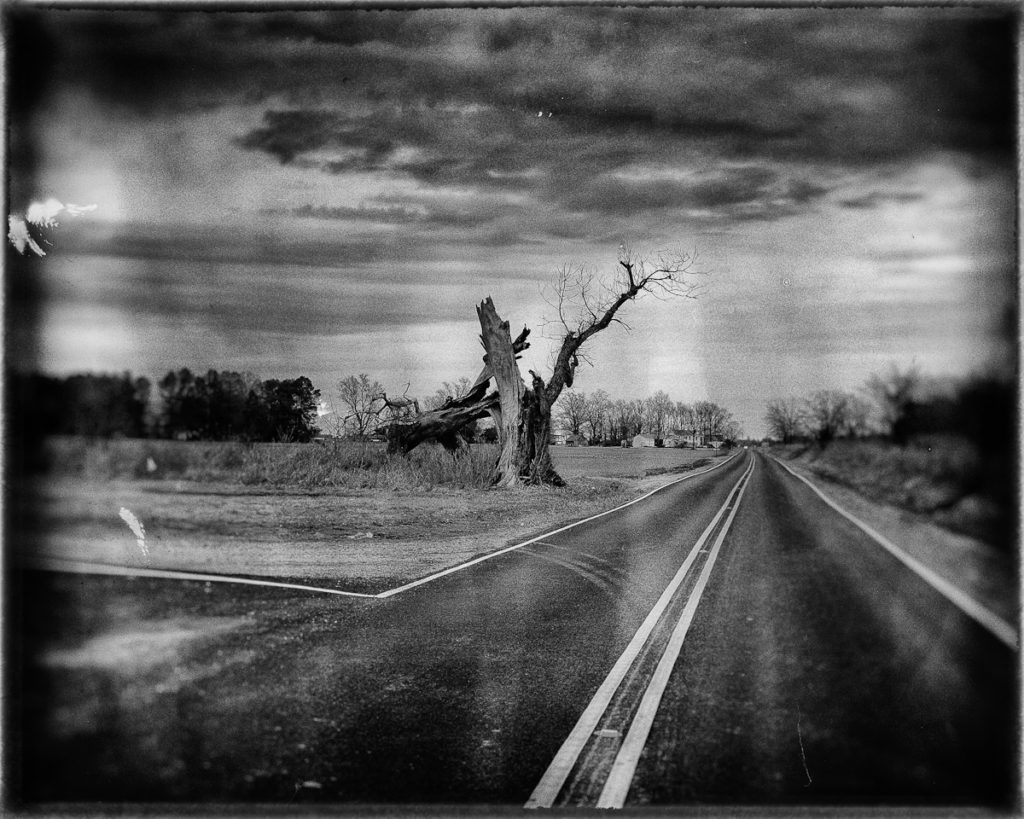
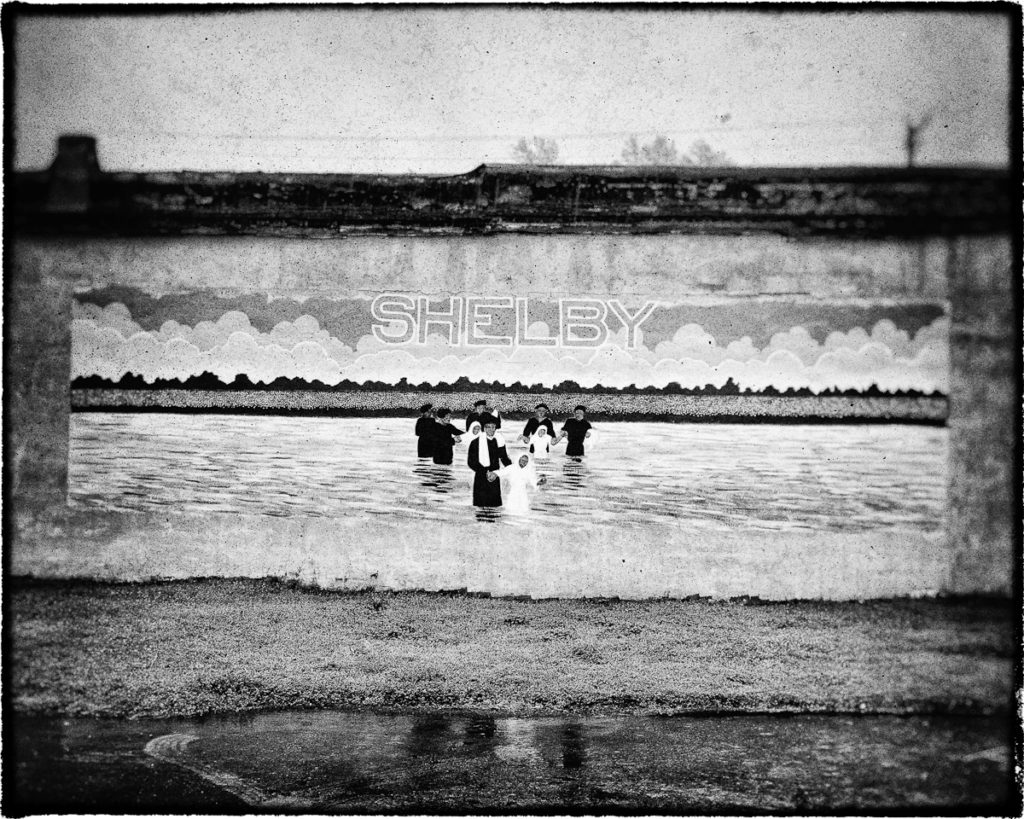
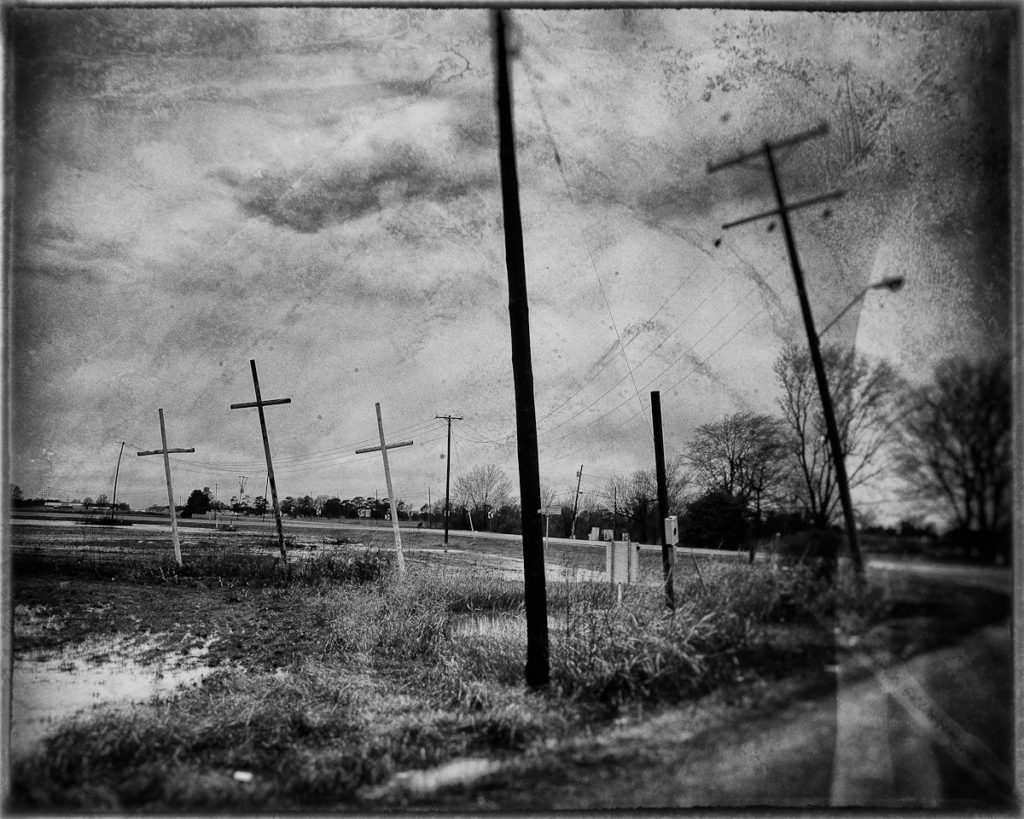
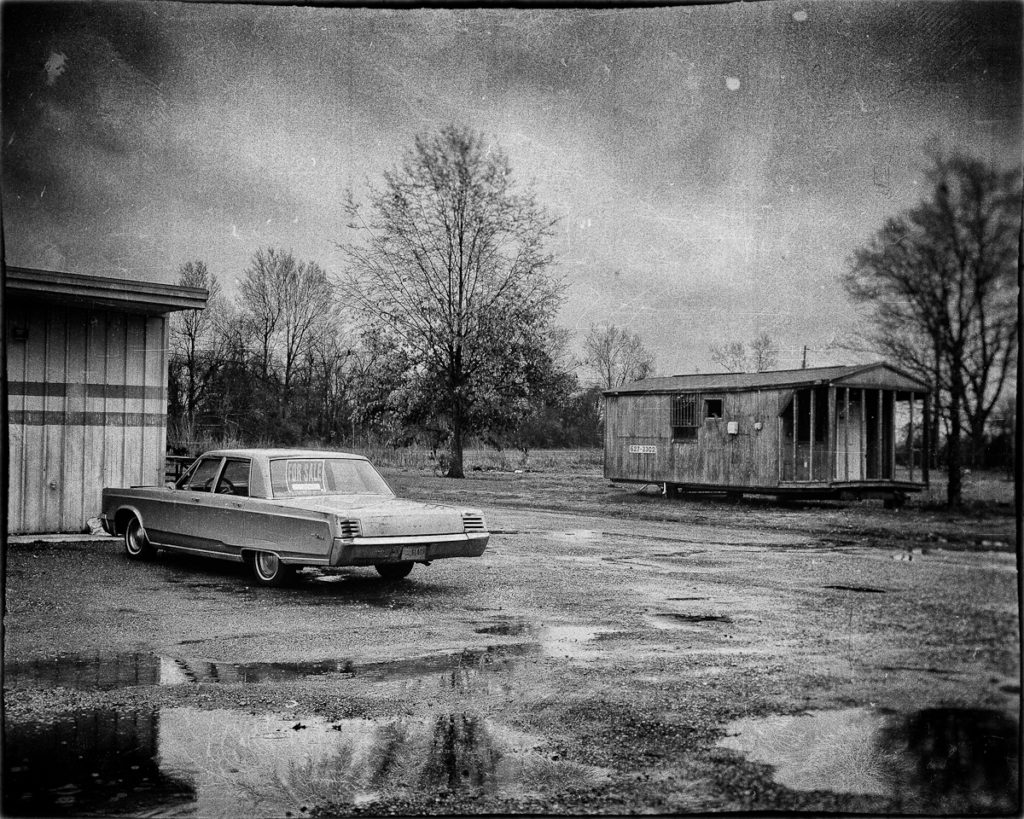
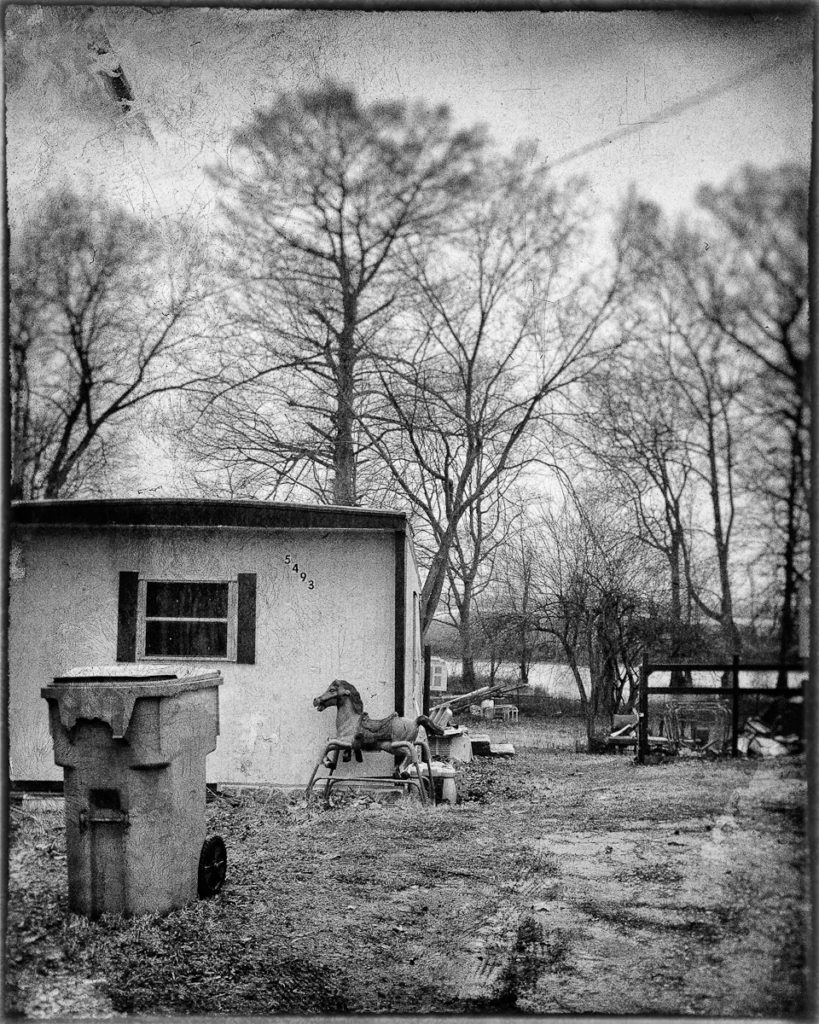
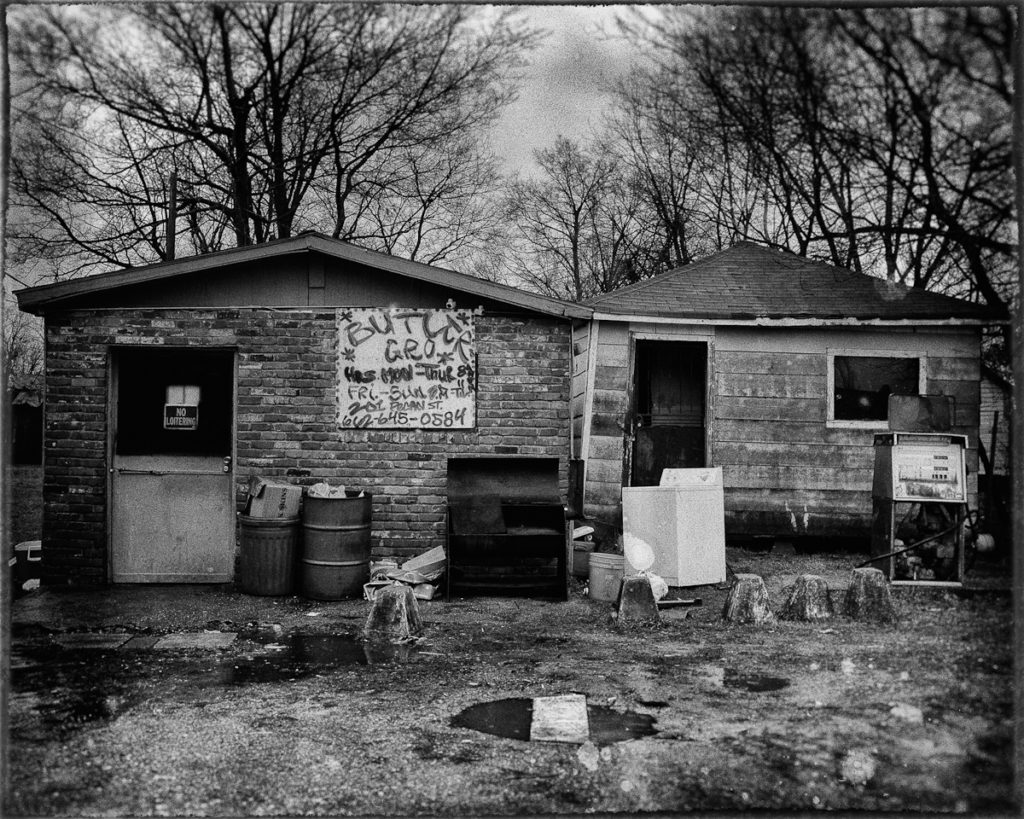
While not the same process, your results are quite eloquent. I love Sally Mann’s work, have for years. But I don’t think her process is as important as her vision. She could do great work with a digital P&S if she set her mind to it.
I’ve had a signed copy of “Hold Still” here somewhere since publication but I’m ashamed to say I haven’t read it yet. Maybe I’ll take it out and delve into it this weekend.
I have to say I enjoy your blogs. I haven’t owned a Leica or shot with film in about 10 years but I appreciate the history and insight you bring. Keep ’em comin’.
I think “mimics” describes the difference perfectly. But the question is, 200 years from now if a person did not know the process used to make a photograph, would it make any difference in the impact on the person? Or would they only care about the end result?
We care now because we know and respect the difference in the skill required for each, but for someone who doesn’t know or care, it is only the end result.
There is indeed an example, albeit on a much more lofty scale.
I have recently visited the Sistine Chapel for the first time, my wife has been there several times since she was much younger, and stated that she thought that Michelangelo’s ceiling was not as beautiful as when she first saw it many years ago.
I thought that I would look into her aspersion, and I quickly discovered that there is a raging argument that has developed out of the recent restoration of that work. The people that did it have created what they believe to be an accurate portrayal.
Critics on the other hand, have noted that Michelangelo had a habit of using soot and various other contaminants like candle wax to adjust the illustrations in order to accentuate certain aspects and make the work sing. These “contaminants” have been studiously removed during the recent work, and created a somewhat flat appearance.
As I said, the argument rages, had Michelangelo explained his methods, perhaps there would be no argument, and what the current restorers regard as environmental pollution, might instead be regarded as intrinsic.
So the “end result” might not be the only important criteria to our descendants.
Another fine post and I love your shot of the crossroads. Magnificent, the happenstance of the dog, perfect.
The digital versions are all worthy and tbf, playing devils advocate, the equal of “real” wet plates especially when printed on the paper you mention via that awesome printer. I appreciate Mann is a legend and her work certainly stands the test of time. She is a wonderful evocative picture storyteller.
I feel the other point worth noting is you also have a gift for the written word. Reading the narrative is always enjoyable for your undoubted insight and humour. Don’t ever stop.
Great photographs of the Delta! There is a wealth of material there.
“That’s the Devil’s Bargain we’ve made with digital. What used to be the product of craft and deep skill is now just a mouse click away. We still get the same results, but the honest pride of work well done has been taken from the process.” Well-written!! That is the argument I have with so many of the current digital crowd (and you know which popular review site is swarming with them): they never had the craft. Click a few software controls to emulate something that they have absolutely no knowledge of how to create from authentic materials and likely have never seen. And they think they are so superior because they do not need to know that “obsolete” craft. Sigh…..
Exactly. I guess that’s the question – where does the issue of craft come in to play in photography? Is my Delta work to be considered the equal of Sally Mann’s, judged solely on the end product, or am I faking something by doing it the way I’m doing it? Or is Sally Mann just a dummy who has the tools to do what she does but refuses to use them so that she can claim some sort of ‘purity’ or authenticity denied to me? Frankly, after working with the body of Delta photos I’ve got for a few days now, I’m convinced I could put together a pretty kick-ass exhibit of the Delta that would equal anything Ms. Mann could do with her existing work. Who’s the dummy – me, or her?
On another subject – just looked at your blog (https://worldofdecay.blogspot.com/). Very nice. You should write up a piece for Leicaphilia…
Amen. Thank you. I appreciate your take on an argument that many will think of as tired and currently irrelevant. Reminds me of Werner Herzog.
I do not play golf, but I know the rules, and I know that it is not uncommon for a player to go out on his own and play the course… The player against the course.
What would be the point in recording an incorrect number of strokes? What would that achieve?
This is my take on what I have just read Tim, a beautiful read, if I may say so. When you suggest that to exhibit your “wet plates” would be deceptive… I would ask, deceptive to whom?
As with the digital photographer who uses software to do the work, you would certainly impress most, if not all of the people that see the result… But there is one person, and that is you, the artist, who would always know the truth, you attempted to deceive yourself, but of course, you never actually did that, you always knew in the back of your mind that you had employed some handy software, or accidentally miscounted the number of strokes on that par 5.
It might even be like removing an inconvenient man from an Indian village scene, in order to get your work onto a world class magazine cover, or superimposing a huge “super moon” into a beautiful landscape.
In the end of course, your “wet plates” have their own merit, and you would of course be perfectly justified to show them where you think fit, but you would feel much better about the whole shebang if you gave an accurate description of how you arrived at the very commendable results. It was definitely worth the effort.
I did indeed wonder how you arrived at the “Emmet Till” picture that you have already published here before. The method whether it is yours, or Sally Mann’s is highly evocative of the area and its history.
Speaking of Emmet Till… Bob Dylan has a long history of artistic theft. What is also true, is that the act is NOT plagiarism, it is a starting point. There is nothing, particularly in photography, that hasn’t been done before.
Thx for the fine post and the great photos!
But I have seen some of your Delta-shots in an earlier post and i like em better without the wet plate effect. This goes a bit too far for my analogue taste. Nothing wrong with digital or with real wet plates, but a fake wet plate ist just too much. This maybe works in an commercial context, as art it is not really satisfying – neither for the artist nor for the viewer. Your pics are wonderful and timeless and still worth an exhibition – they don’t need a fashionable vintage-retro-style effect.
Just my two cents.
Actually, what might make an interesting exhibition is to print two copies of each selected shot – one the “straight image” the other the post-processed wet plate. Have them hung side by side as a couple, or better yet framed together within one frame. It could be a narrative on the deception of photography blah blah blah.
…damn! That’s a great idea. Turn the exhibition into a question about the objectivity of photography, the role that digital plays in accelerating the destructive process of bending the truth, the role of artistic vision and its worth given the quick and easy means it can be accomplished, etc etc. I’d have to write up some cockeyed and pretentious Artist Statement ( I believe there’s an Artist Statement Generator on the wweb- just plug in the relevant parameters and it’ll spit out a legit statement couched in official Art Speak. I could have 2 Artist Statements, one that goes with the wet plates and is generated by the automatic generator, the other that goes with the straight prints and is written by me.
Steffen: you’ve helped articulate the conundrum – you find something “put on” about the work now that I’ve told you how I did it. But what if these actually were wet plates? Would that make them acceptable? Why so, or why not? I think these are the questions that help us get to the kernel of what we value about photographs. You and others’ comments raise fascinating questions, questions I’m not sure I have the answers to.
Well, I know how you did it and have seen former versions, just can’t erase my mind. I don’t know what I think, if these were real wet plate prints. But does real wet plates really look like yours?
I have to say, I’m not so familiar with the wet plate collodion process and how it really looks. My impression is, that the emulation of your software overdo it a bit. It’s just a touch too much. Also the unsharp areas looks a bit artificial to me. The contrast and grain is that of an 35mm TX print and not the look of a large format wet collodion plate. Compare it to the Southern Landscapes of Sally Mann.
Your earlier versions are an emulation too: That of an 35mm Film with lots of grain, copied with the black frame to show that there is no crop. Cartier-Bresson-Style. But here, the effect isn’t so strong and distracting. Compare the versions of the pic with the crosses.
Does the look of the wet plate add anything important to the content or message of your pics? Or is it just an effect. If these were real wet plate prints, it would be a part of your work, your expression as artist.
Don’t get me wrong, these are still great pictures. You are the artist and if this is your intention, it’s alright.
I like the idea of double artist’s statements, especially if the one contradicts the other.
I used to think I saw problems with digital photography, but that was, in retrospect, more a little conceit, maybe even a misconception about what I had imagined photographic art was all about.
Today, I am of the opinion that the end product is the end product, take it or leave it on its own merit. I have sometimes put fake borders around my snaps, and why ever not? It passes the time and lets me see how they look that way. I can always remove them if they displease me when my current mood swings, as it is sure to do.
In fact, messing about with effects, as long as they do not extend into the horror of canoes surfing down Niagara, is nothing worse than just playing with the tools available to the photographer or artist, whatever he thinks he might be on any given day, and what’s wrong with that? FWIW, I do like the messed up look of your 4x5s; I feel it matches the patently fucked up look of the material you caught. It’s a slice of life; it’s also a photograph made for your own satisfaction, so what more should count?
As I gave up printing when HP abandoned the wonderful B 9180, my pics today travel no further than my website. And yes, it does take away a pleasure – of sorts – but my boxes of A3+ prints in archival crystal sleeves, prints that never see the light of day anymore, seem like money down the proverbial toilet.
What’s the point?
“Canoes surfing down the Niagara.” I’m noting that for future use, Rob.
Actually, I do wonder why people, Sally M included, go to all the trouble of using antiquated methods when at the end of the day, not a lot is gained. Is the mere act of doing it worth enough to justify both the bother and cost? If so, then possibly the lure is not so much about image content, as it might be about the striving after effects.
Personally speaking, perhaps the only old-tech-oriented things that I would love to be able to use again are the 500 series ‘blads that I used to have. Yes, the look of wet prints was and still is cool, but over and beyond that, it was the fantastic feel of those Swedish machines themselves that made their use such a pleasure. As long as you didn’t have to carry them very far, that is, or tote along the obligatory tripod, either.
As I suggest above, and as a sort of final opinion from myself to myself: beyond hardware, the best part of analogue photography was the look of real print, most of all on a well-glazed, white, smooth glossy, double-weight paper. Can’t be beaten. Tonalities enough to make one salivate. Or to tear one’s hair out.
Rob
I have Sally Mann’s Deep South open in front of me, as well as a book of Carleton Watkins’ work (well worth Googling). Images in both books are very different than what your post-processing software has generated. The key difference has to do with film grain – in a wet-plate image there is none; you started with Tri-X which is going to have much more visible grain.
The other difference is that while Sally Mann has no problem with images with some flaws, the output of the post-processing software is way too heavy handed. A negative with that many flaws would probably just get tossed out. Does the post-processing software have a slider to allow you to decide how “flawed” the output should be?
There is something about the “distressed” look of the manipulated image that parallels artificially worn-yet-new guitars, jeans, and, yes, Leicas. It seems….unseemly.
Outside of commercial work for hire or for sale, why or how does anyone make a photograph? It’s personal, hidden inside your head, and that’s where it stays unless you try to describe your thought process to others, as you do here.
You’re right though, in 200 years or 200 days, it wouldn’t normally matter to most observers how any of these images were made. It’s only because both you and Sally describe your inner process through blog or book that the method becomes part of the picture in the mind of the viewer. The effect of Photo plus Story is much greater than the sum of the parts.
It’s like watching TV with the sound turned off. Myself, I’ve started captioning many of my photos with detailed descriptions… sometimes just a few words and a date, sometimes as much as a paragraph. Photojournalism, yes… art, maybe… but much more interesting overall to any viewer in the 23rd Century.
Wet plate or digital image, who cares? certainly not to the viewer who is interested in the final result. Now, it is a different story for the photographer as images could be less important than the internal journey. It would be interesting to know why Sally Mann used wet plates and not a more convenient process…. For the internal journey or for the result?